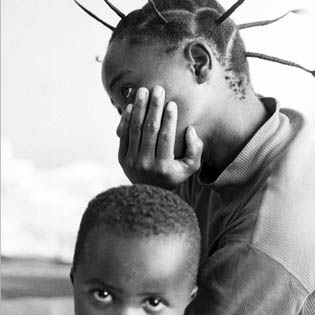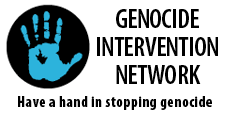
The New York Times recently ran an article as its cover story in the world section concerning the epidemic of rape in the Congo. Brutality towards women in this conflict-ridden area has become almost “normal”. André Bourque, a Canadian consultant who works with aid groups in eastern Congo, is quoted: “Sexual violence in Congo reaches a level never reached anywhere else. It is even worse than in Rwanda during the genocide.”
After returning from a trip to the Congo in 2003, John Prendergast penned a journal entry:
It has become a cliché over the past half century that women bear the brunt of war. That would be an understatement in Congo. Rape has become a routine tactic of war and instrument of violence in Congo. Gross atrocities are routinely committed in the context of mass rape. Lately, there are reports of atrocities and deliberate acts of mutilation committed in the context of mass rape. Brutal rape, kidnapping of women, and forced concubinage have become war behaviors. The brutality of rape appears to be unprecedented globally, and certainly without historical precedent in Congo. The ages of rape victims range from 4 to 80.
At a recent conference hosted by the Genocide Intervention Network, I sat in on a panel discussion with Colin Thomas-Jensen, policy adviser for the ENOUGH project and co-author of the report Averting the Nightmare Scenario in the Eastern Congo. He briefed our group on the current situation in East Congo and expounded on four major reasons why the DRC is a qualifying candidate for the Responsibility to Protect (R2P) doctrine (Member nations at the UN World Summitt in 2005, agreed to the Responsibility to Protect doctrine which states that when a government is unable or unwilling to protect its citizens from mass atrocities, the international community must take responsibility). The second qualification provided by Thomas-Jensen–following the declaration that the DRC has the highest death rate in the world–is that the crisis in East Congo is a full-scale war against women. “There is no worse place in the world to be a woman”, said Thomas-Jensen, conceding that the panel was not the appropriate forum to detail the horrific violations systematically taking place against females there.
Prendergast asserts that an end to the suffering in the Congo depends on the international’s community’s responsibility to protect those being adversely affected: “That responsibility to protect means a number of things. It means providing much more humanitarian aid. It means giving much more support for UN troops to protect civilians. It means becoming much more serious about disarming the predatory militias. It means engaging in much more diplomacy aimed at healing regional and internal rifts. And it means providing much more support to the new Congolese government.”
GET EDUCATED! To learn more about the conflict in Eastern Congo visit the ENOUGH Project.
TAKE ACTION! Learn more about actions you can take against genocide by visiting the Genocide Intervention Network.
BECOME PART OF THE ANTI-GENOCIDE CONSTITUENCY! Call 1-800-GENOCIDE to find out how to talk to your congressional representative.
Responsibility to Protect,
Katie Orlemanski

Our mission is to stop and prevent genocide and mass atrocities by promoting Peace, providing Protection, and Punishing the perpetrators. We use field and policy analysis and strong policy advocacy to empower a growing activist movement for change.

Our mission is to empower individuals and communities with the tools to prevent and stop genocide.
Rachel: your blog makes me cry.
just think if the nytimes made people cry
every day.
that would be amazing
Sent at 11:02 AM on Wednesday.
Thanks Rachelle Belle. You made my day.
I read this NYT article and felt immediately, vaguely, ineffectually sick. The impossibility, in a position of comfort and safety and love and security and happiness, of even registering the possibility, much less the fact of this reality…. How does one engage such an off-the-charts horror? Thank you for including, as always, some concrete steps we can take.
Do you think all of the focus on the word “genocide” makes issues like this one harder to act on internationally, when a gender, not a race or ethnic group or nationality, is being attacked, and not necessarily being “exterminated” but attacked with a specialized, sexualized tactic of brutality? Have there been political or anthropological analyses of this outbreak/growth of extreme violence against women in the Congo?
[…] have been thinking about a response my sister made to one of my posts about rape as a weapon of war (”Women in the Congo” 10/09/07). She wrote: Do you think […]
My name is danielle, I’am 14 year old. I’m from Congo.
I just thank you for carryabout my country.